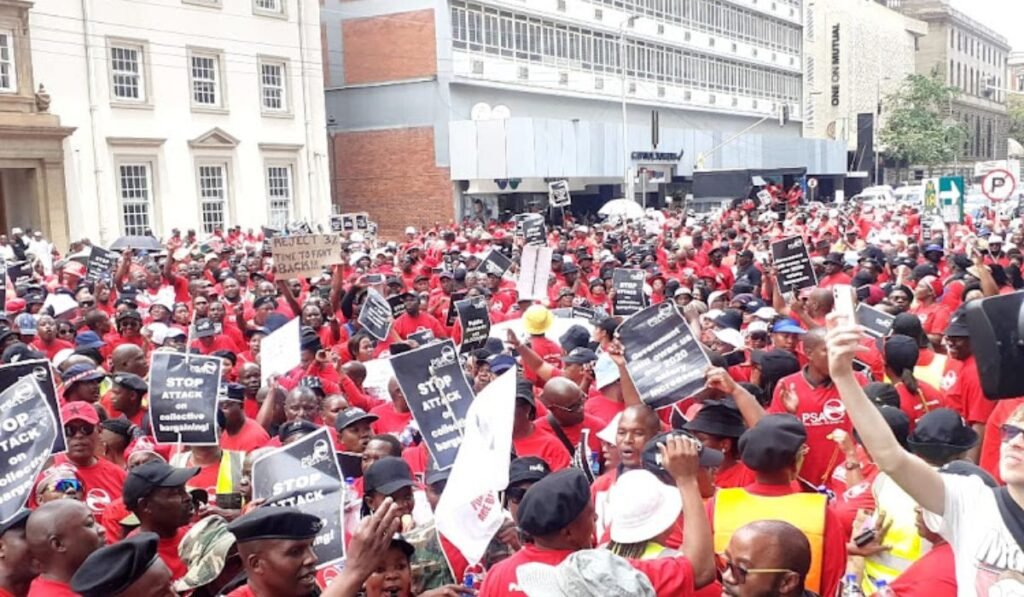South Africa’s National Treasury has officially confirmed that beginning June 1, 2025, public sector employees will receive a 5.5% salary increase. This pay adjustment impacts a broad range of workers across the government, including educators, healthcare professionals, police officers, administrative workers, and many others employed in public service roles. This is the most substantial wage increase for state employees in several years and comes after prolonged negotiations between the government and labor unions. The salary hike is expected to positively impact over 1.3 million public servants across the country and forms part of a multi-year wage agreement valued at over R23.4 billion, with R7.3 billion specifically allocated for the 2025/26 financial year.
What Does a 5.5% Salary Increase Actually Mean for Your Monthly Income?
While 5.5% may sound modest, it translates to a meaningful difference in the take-home pay of various public employees. For instance, an entry-level teacher previously earning R154,671 per annum will now see their salary increase to around R163,179, equating to an extra R8,500 per year. In higher salary bands, such as that of a school principal, the annual income rises from R1.21 million to approximately R1.276 million, delivering a boost of more than R64,000 per annum. This means that monthly payslips will reflect significant changes, particularly in senior roles, helping public workers better manage rising living costs and persistent inflation. Across all departments, the increase will help narrow wage gaps and boost morale after several years of wage freezes and disputes.
Why Was the Final Offer 5.5% When Initial Demands Were Higher?
During initial rounds of negotiation, labor unions were advocating for wage increases in the range of 6% to 6.4%, citing the impact of inflation and stagnant wages. The government initially offered a lower figure of 4.7%, which was swiftly rejected by unions. After weeks of discussion and growing public pressure, a compromise was reached at 5.5%, with an agreement to include a 1% inflation buffer in the 2026/27 and 2027/28 fiscal years. Although not all parties are entirely satisfied, the 5.5% offer was ultimately accepted by the majority of public service unions. Treasury officials have stated that this figure strikes a balance between fair compensation and fiscal sustainability.
What Has Been the Reaction Among Public Workers and the General Public?

Public sentiment has been mixed since the announcement. While some public servants have expressed gratitude for the long-awaited increase, others feel that the 5.5% adjustment still falls short of real inflationary pressures. Online forums and public discussions have highlighted a divide many acknowledge the effort to reach a settlement, while others criticize the government for not doing enough to address years of wage stagnation. Given the rising cost of essential goods, fuel, and housing, many public workers argue that a 6% to 7% increase would have more accurately matched the economic challenges they face. Still, the consensus remains that this is a step in the right direction and better than previous offers.
When Will the Salary Increase Be Reflected in Employees’ Payslips?
The implementation date for the revised salaries is officially June 1, 2025, meaning most public servants should see the increase reflected in their June payslips. However, actual payment dates may vary slightly depending on departmental payroll schedules. Some departments may experience administrative delays, so it’s recommended that employees monitor their payslips carefully throughout June and July. As of now, back pay has not been explicitly mentioned, and workers seeking clarification on retroactive payments or anomalies should consult their department’s Human Resources (HR) unit for official confirmation.
What Should Public Sector Workers Do to Ensure They Benefit?
Public servants are encouraged to verify their payslip details once the June payments are processed. If the 5.5% increase is not reflected accurately, employees should immediately raise the issue with their HR office or union representative. It’s also important to review any applicable allowances, as education, healthcare, and policing departments may receive additional sector-specific adjustments based on their collective bargaining agreements. Moreover, workers should familiarize themselves with the Consumer Price Index (CPI) protection clauses included in the deal, which promise inflation-related increases for 2026 and 2027, helping to safeguard earnings in future years.
Is the Government Thinking Long-Term with This Agreement?
Yes, the June 2025 pay increase is part of a multi-year wage strategy designed not only to reward public servants but also to bring long-term financial stability to the government’s wage bill. One key element of the plan includes early retirement incentives, targeted particularly at senior and long-serving employees. The initiative aims to create more room in the public wage structure by encouraging voluntary exits, especially among higher-paid workers. The Treasury estimates that up to 30,000 public servants may take up this offer over the next two years, easing budgetary pressure and creating job opportunities for younger professionals.

